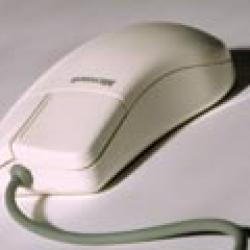Source Institutions
Source Institutions
Add to list Go to activity
Activity link broken? See if it's at the internet archive

In this activity, learners explore the concept of how engineering solved the problem of human/computer interface. Learners disassemble a mouse and explore the movement on the X/Y axis that determines mouse positioning. Learners explore design enhancements to the mouse over time, and as a team of "engineers" add further enhancements to current mouse design.
- Under 5 minutes
- 1 to 2 hours
- $10 - $20 per group of students
- Ages 8 - 18
- Activity, Lesson/Lesson Plan
- English
Quick Guide
Materials List (per group of students)
- Student Resource Sheets
- Student Worksheets
- Roller ball mouse
- Eyeglass repair kit or mini screwdriver (must be very small gauge)
- Model construction materials: water based glue, scissors, tape, ruler, paper, toothpicks, straws, spools
Subjects
-
Engineering and Technology
-
Computing
- Computer Science
- Information Technology
-
Engineering
- Computer Engineering
- Electrical Engineering
- Mechanical Engineering
- Metallurgy and Materials Engineering
-
Technology
- Information and Communication
-
Computing
-
Mathematics
-
Geometry
- Plane Geometry
-
Geometry
-
Physical Sciences
- Electricity and Magnetism
-
The Nature of Science
-
The Scientific Process
- Conducting Investigations
- Gathering Data
- Formulating Explanations
- Communicating Results
-
The Scientific Process
-
The Nature of Technology
-
Technology and Society
- Impacts of Technology
- Technology and History
-
The Design Process
- Research and Development
- Invention and Innovation
- Problem Solving
- Troubleshooting and Maintenance
-
Technology and Society
Informal Categories
- Computers
Audience
To use this activity, learners need to:
- see
- read
- use mouse
- touch
Learning styles supported:
- Involves teamwork and communication skills
- Involves hands-on or lab activities
Other
Components that are part of this resource:
Includes alignment to state and/or national standards:
This resource is part of:
Access Rights:
- Free access
By:
Rights:
- All rights reserved, IEEE,
